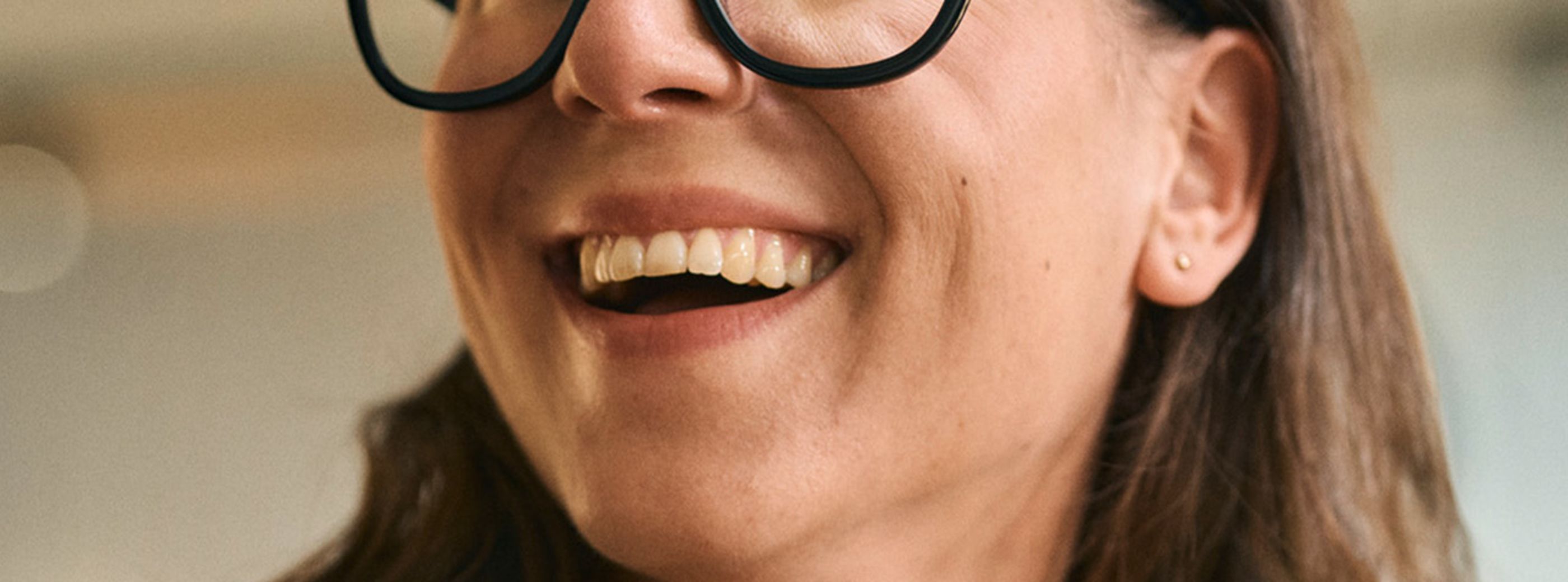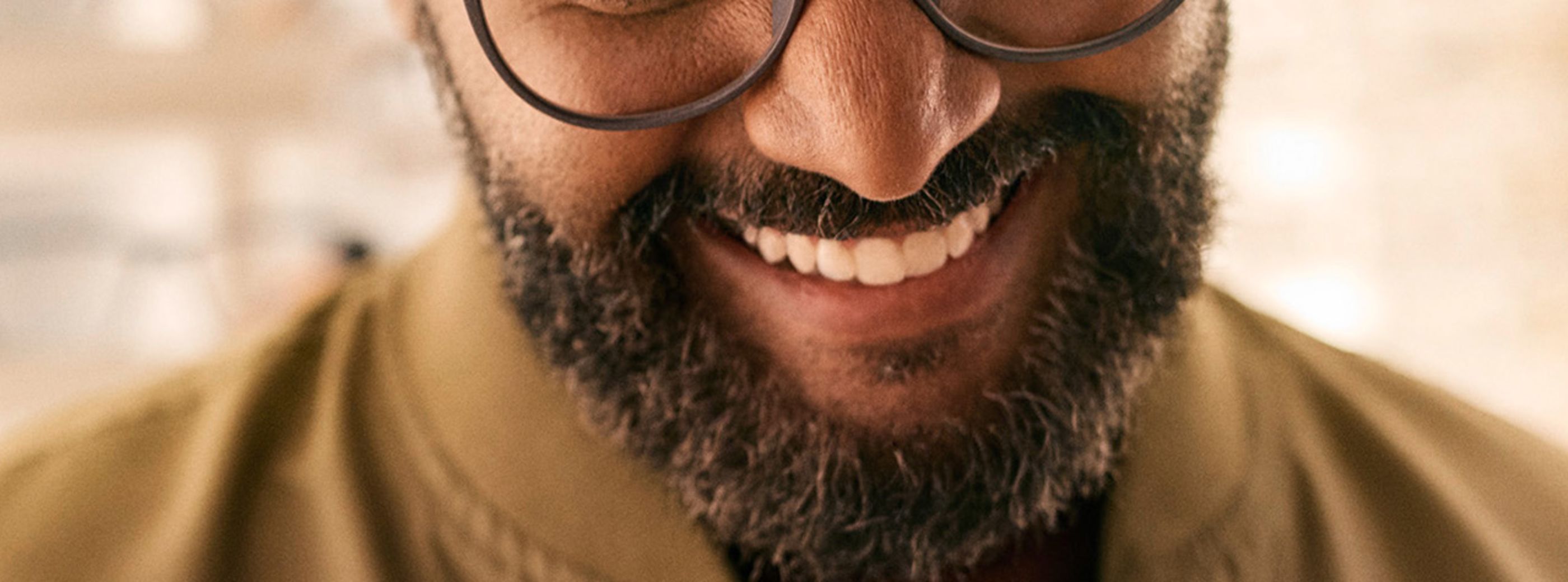Children’s glasses – for those first glimpses of life
Even the smallest ones among us wear glasses, with almost one in five children being prescribed glasses nowadays. Babies and children discover the world with their eyes, and have to learn to see. The main problem is in identifying defective vision in children. So parents should take a close look and pay attention to certain signals.
Early recognition of defective vision in children can prevent or minimise more serious problems later in life. The difficulty lies in identifying the problem, as children are generally not able to draw attention to it themselves. In this section you can get advice on this matter, as well as the right time for glasses and how to go about purchasing them.
When does my child need glasses
Seeing is like walking – everyone has the basic ability. However, it takes time to develop. Between the second and fourth month babies can already start to recognise things like eyes and mouths.
Important to know: It’s normal for small children to be farsighted. The elasticity of children’s eyes can compensate for this. The farsightedness generally disappears as the eye grows.
Your child will need glasses if the following issues arise:
Farsightedness/differing ability to see in both eyes
Shortsightedness, which often goes unnoticed before school starts
Corneal curvature, which prevents sharpness of vision
Possibly in the event of strabismus (squinting)
It is very important that all such issues are addressed, otherwise there is a risk of amblyopia (so-called “lazy eye”), which is when an eye fails to achieve normal visual acuity even with glasses or contact lenses.
How do I recognise defective vision in my child?
There are several indicators for defective vision in a child:
Babies & infants
Cloudy cornea
Twitching, inflamed, teary or yellow eyes
Squinting
Eyelid disorders
Baby doesn’t look for eye-contact
Pre-school & school-aged children
Constant rubbing of the eyes
Sitting up close to books or screens
Increasing difficulties in diminished light and darkness
General balance disorders
Other signs of possible complications in older children include headaches, tiredness, uncertainty when taking hold of objects, reading and writing disorders or concentration disorders.
In any event, make use of the option for precautionary check-ups. It’s better to be safe than sorry.
Check-ups for my child
The chance to partake of free eye tests for children should be availed of. All newborn babies in the UK have an eye test in the first days of life, and then again at 2-3 months, to look for conditions such as cataracts. Usually after the age of 3 your child can visit an optician for an eye-test, and all children should have an eye-test between the ages of 4 and 5, before they start school. This is particularly important for the prevention of problems such as amblyopia, which can be difficult to treat if not detected before the age of 6. You can also visit your GP if you have any concerns. If necessary, you will be referred to an eye specialist.
Tip: All NHS eye tests for children under the age of 16 are free.
Buying children’s glasses: What to look out for
When it comes to glasses for babies, there are particular requirements. Get advice from an expert, as special manufacturing techniques are often required. The expert will help you to find the right material, form, etc.
Buying glasses for children and youths is not so different from buying for adults. The glasses size should be right for the head and face, have a stable fit and the correct lens centring, be robust and as light as possible. Obviously, for children the appearance is also very important so that they feel fully at ease wearing glasses.
Tip: Check whether you can get an NHS voucher to help pay for the cost of your child’s glasses.
The psychological shift is an important moment: it’s a big change for a child to suddenly start wearing glasses and it can be difficult to get used to, also because the field of vision reduces. So it’s a big help if your child likes the glasses. Let your child choose the glasses and show a positive reaction. The keener they are, the happier they’ll be to wear them.
In the following, we’ve assembled a few tips to help make buying glasses for your offspring child’s play.
Material
The most important factor here is the durability of both frame and lenses. Children don’t want to be thinking about fragility. Plastic lenses are a smart choice, as they are shock-resistant and shatter-proof. Plastic or titan-flex is recommended for the frames.
Fit
The frame should be neither too large nor too small. The right size is important for the optimal centring of the lenses. Ideally the glasses should correspond to the size of the eye sockets and be no wider than the face. What’s more, they shouldn’t put any pressure on the cheek bones or behind the ears. Obviously small frames cause the least bother, but it’s important that the lenses are large enough for your child to have a sufficiently broad field of view.
Centring
Lens centring is directly connected to the fit of the glasses. Only if the fit is correct and stable is a precise centring guaranteed, even while in motion. Glasses that are not correctly centred can lead to double vision, headaches or prismatic side effects such as squinting.
Temples and bridges
The problem of pressure behind the ears and on the bridge of the nose is a common one. Try to make sure that the surface area of the bridge where it comes into contact with the nose is large and that the weight of the glasses is evenly divided, as with the saddle bridge made of plastic. Saddle bridges adapt easily to the form of the nose and are flexible. Temples can be got that extend almost down to the ear lobes and prevent the glasses from slipping during movement. Stable hinges, so-called feather hinges, are very robust and ensure long-term durability.
Choice of lens
Plastic lenses are more durable and lighter than glass. A hard-coating is essential, so as to minimise scratching. If your child needs glasses with high corrective values, then high-quality lenses are recommended that minimise the effect of the eyes appearing larger or smaller. With thinner, higher-quality lenses you will also reduce the weight of the glasses. An anti-reflective coating is also recommended.
Tip:It is essential to speak to your optician about the right glasses for your child, so that you really do make the right choice.
Extra tip: online purchase
Especially when it comes to older children, an online purchase can be a genuine and stress-free alternative. While it’s hard to get children enthusiastic about standing around at the opticians for hours, it’s easier to engage them at the computer, especially with the possibility of seeing how the glasses look via photo or webcam. All you need to get going are your child’s corrective values.
Checklist for the purchase of children’s glasses
Light & flexible
Robust & durable
Temple ends & nose pads soft and supple
The right fit for the head
Plastic lenses incl. hard coating, as less likely to break and become scratched
Full anti-reflective coating
Get advice from an optician!
Regular check-ups are recommended!
Eyes and vision change constantly, so it’s recommended to get them checked once a year at an eye specialist. Glasses should also be regularly checked by an optician. This service can generally be availed of free of charge.
Make sure to at least get an eye test for your child before it starts school. This way you can be certain your child has no vision problems and/or that its vision hasn’t deteriorated.
Pay attention to the following basic rules:
First eye test within the first ten days of life
Detailed examination no later than the second or third year
A second examination before starting school
An additional examination every one to two years
For babies born prematurely and all children whose parents or siblings squint or have major vision problems, get an examination between 6-12 months & regularly thereafter
Important: Take your child for regular check-ups so as to recognise an improvement or deterioration in vision in good time. As long as the child is growing, the eyes’ vision will continue to change.
Vision problems in an eye that is still growing can be successfully treated if detected early, while poor vision can be minimised or avoided.


